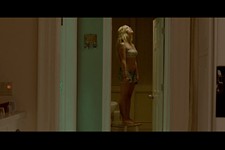Straw Dogs
By Paul Seydor, Fri., Oct. 22, 1999
It is a pity that the terms of critical debate surrounding Straw Dogs were established early and focused upon the most misleading and the least interesting aspects of the film: the so-called "rites of manhood" that Peckinpah was said to insist upon and the "sexual fascism." Peckinpah himself cannot be exonerated from blame here. Owing to several hopped-up remarks he made in the notorious Playboy interview of 1972, he seemed determined to justify the worst that his detractors wanted to believe about him. But it is a tribute to his artistry, his imagination, and, yes, even his intellect that the film he made confounds any simplistic reductionism.
At the center of the critical maelstrom is the double rape. Charlie, Amy's old boyfriend, and his pals leer at Amy; she flaunts her sexuality right back as a way of demonstrating her superiority and power over them. When Charlie comes by for a drink and she invites him in, he thinks she'll readily submit while she thinks she can easily hold him at bay. The situation quickly escalates to violence, then beyond violence into some netherland of passion and regret. Those who charge Peckinpah with approving of rape seem not to notice that he gave us a second assault that is not just different from but radically antithetical to the first one. Scutt sodomizes Amy, with Charlie's craven cooperation. If Peckinpah really were the misogynist he is sometimes accused of being, a scene such as the church social would be inconceivable coming from him. In one of the great sequences of psychological cinema, he films virtually the entire social from Amy's tortured point of view, not just dramatizing her anguish, but making the very tissue of the filmic narrative embody her feelings of pain, shame, and degradation. Everywhere she looks, everything she sees recalls some aspect of the trauma.
Peckinpah said of David Sumner, the nominal hero and Amy's husband, that he is an intellectual who discovers his own capacity for violence. But what the siege seems to demonstrate more than anything else about David is that if you're basically a rather methodical, controlled fellow under ordinary circumstances, you're not going to change colors much under extraordinary circumstances. David approaches the siege as if it were a mathematical problem. The only time he gets caught up in any sort of bloodlust is relatively late when he beats the rat catcher to death with a poker, and he passes through this so quickly into a kind of demoralized exhaustion that he's almost catatonic when Charlie shows up with the shotgun. By the time the last assailant revives, it is Amy -- not David, now spent and helpless -- who must dispatch him. In an inspired touch, when David finally gets up, the first thing he does is set aright an overturned chair.
Stuck for an ending, Peckinpah and his star Dustin Hoffman came up with a perfect one on the eve of filming the last scene. As David drives the retarded Henry Niles home, Niles says he doesn't know the way, David replies that he doesn't either. But the final image is the stroke that really tells: a long shot of the car completely enshrouded in a dense fog, wholly untethered, cut off, without visible points of contact to any world around it.








